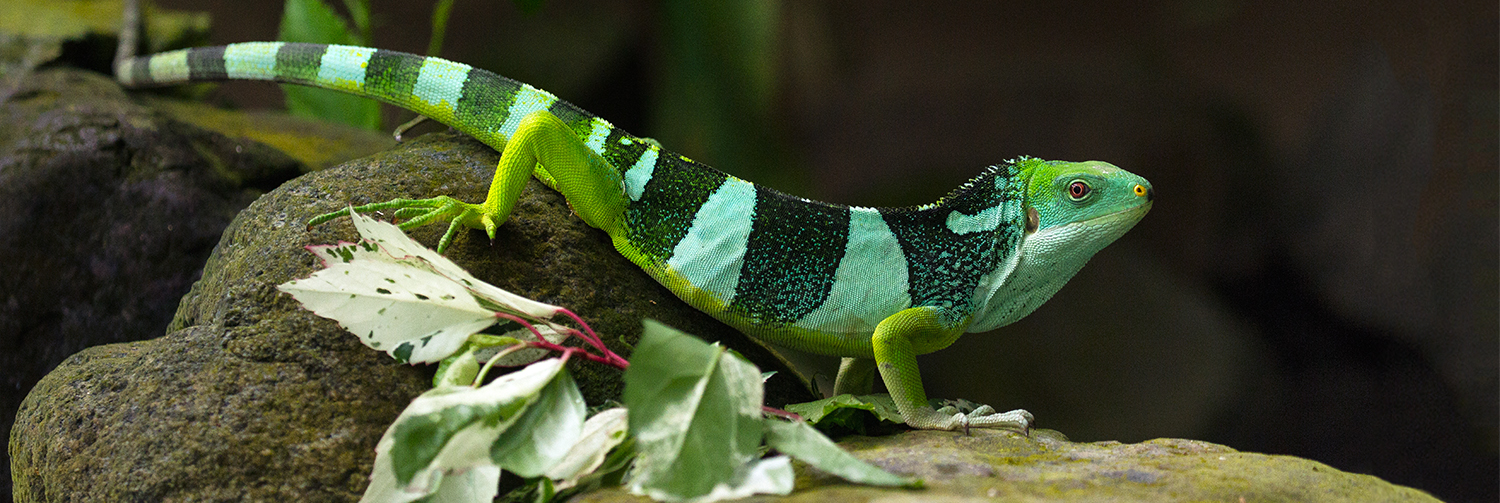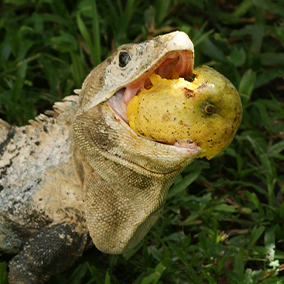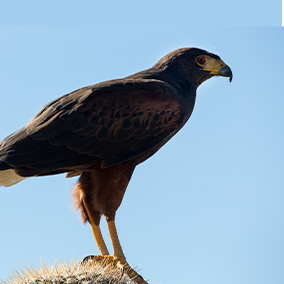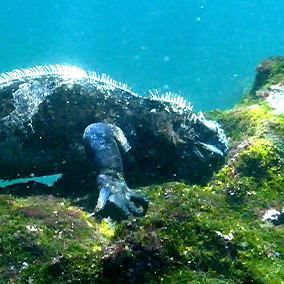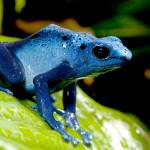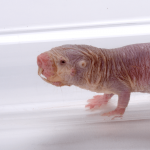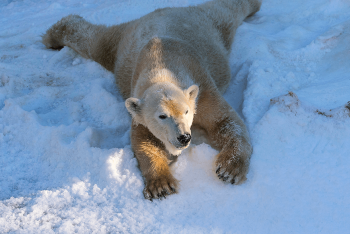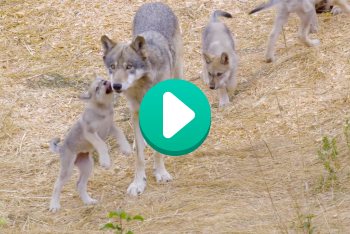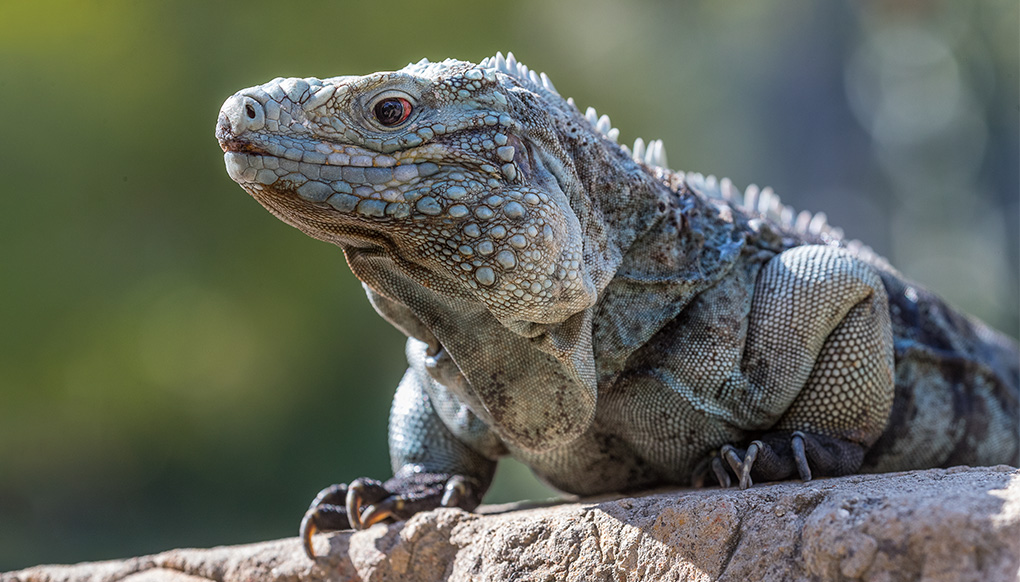
iguanas
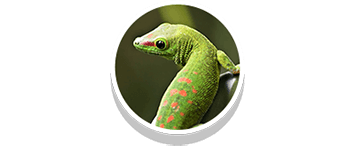
Reptiles


Some Endangered
facts

A green iguana is the largest species. The smallest is the spiny-tailed iguana. An iguana’s tail makes up about half of its length.

Most iguanas eat fruits, flower buds, and leaves. Some also eat worms or small insects. One, the marine iguana, dives in the ocean to eat algae from rocks.

Different iguana species live in different habitats. Some live high in the trees of a tropical rainforest. Others live in deserts, scrublands, grasslands, or rocky areas. Several live on islands.
description
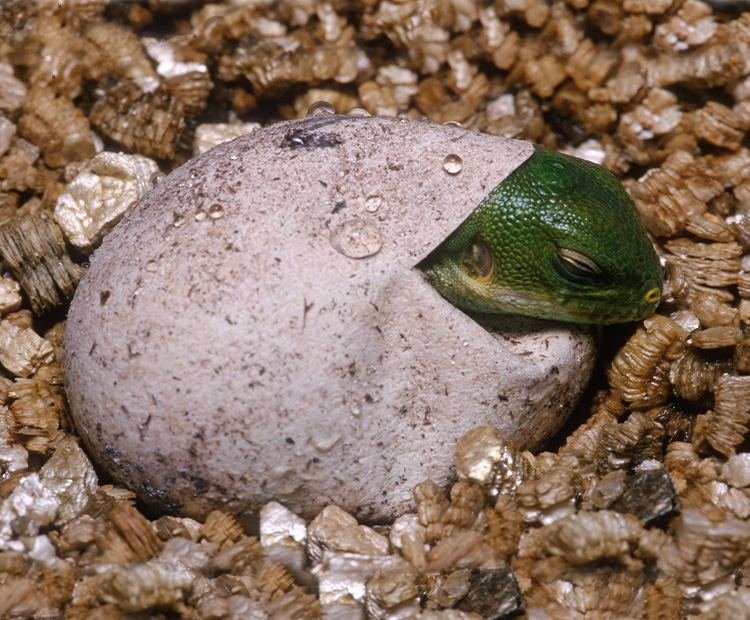
description
No mama
Not for a baby iguana, that is. A female iguana digs a burrow in a sunny spot. She lays her eggs inside, covers them, and then leaves them alone. Even species that live in trees visit the ground to lay their eggs. A burrow is good place for eggs. It doesn’t get too hot or too cold. All the eggs in a nest usually hatch at the same time. Iguana hatchlings dig their way out.
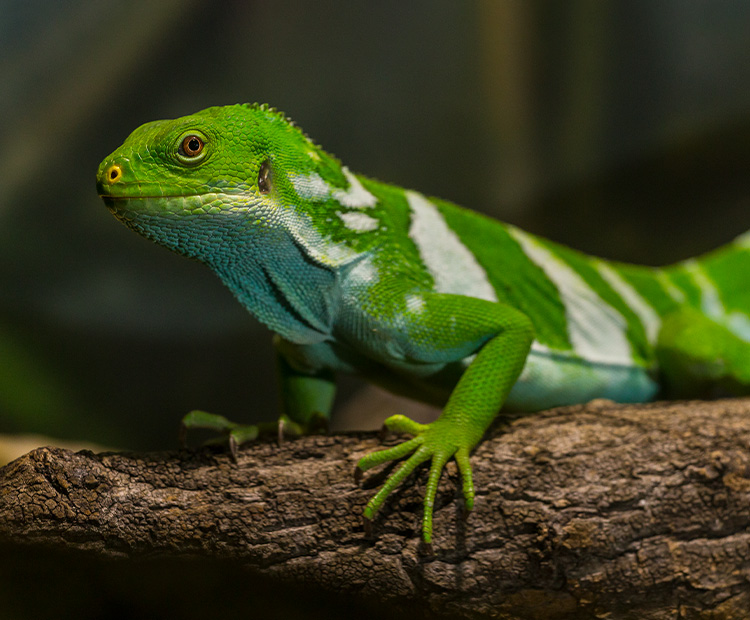
Fijian iguanas
In the South Pacific Ocean, the iguanas of Fiji are emerald green with bands of white or blue. Some live in coastal swamps while others inhabit rainforests in the mountains. They all live in trees. Long toes with sharp claws help them climb, and long tails help them balance. Fijian iguanas are rare and endangered. The San Diego Zoo has the largest and most successful colony of these endangered species outside of Fiji.
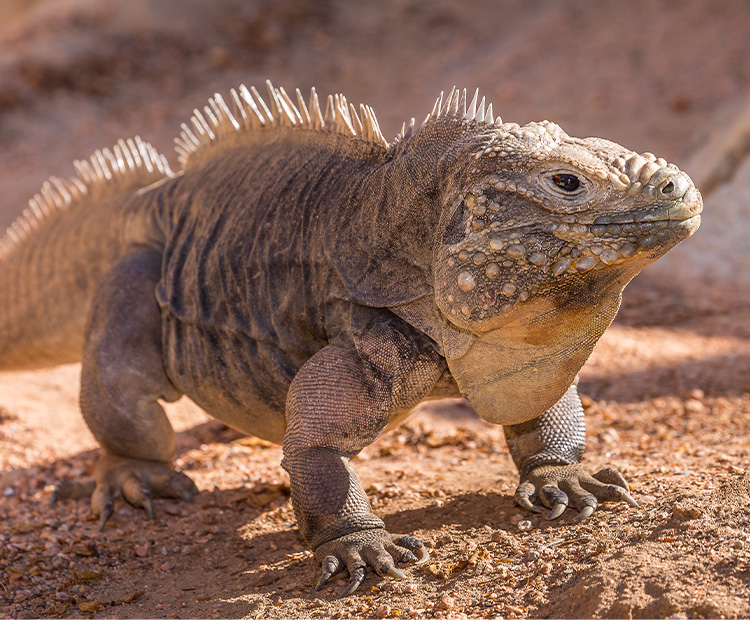
Rock on!
The Caribbean islands are home to several rare and endangered iguana species. Known as rock iguanas, each species generally lives on only one or two islands. These islands used to be safe for adult iguanas. Then people brought dogs, cats, rats, and mongooses, which prey on these lizards. Now, rock iguanas may be the most endangered group of lizards in the world. Our conservation scientists work with some of these species. The San Diego Zoo was the first zoo in the US to hatch the critically endangered Anegada Island iguana.
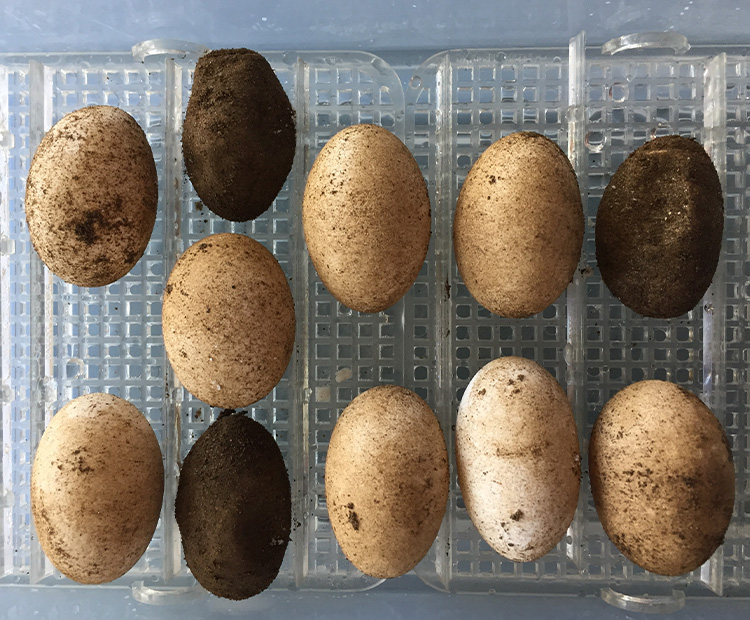
Head start
One way we help iguanas is called “headstarting.” We incubate iguana eggs and care for the hatchlings to keep them safe from most predators. We release them when they are large enough to protect themselves—giving them a head start in life.

